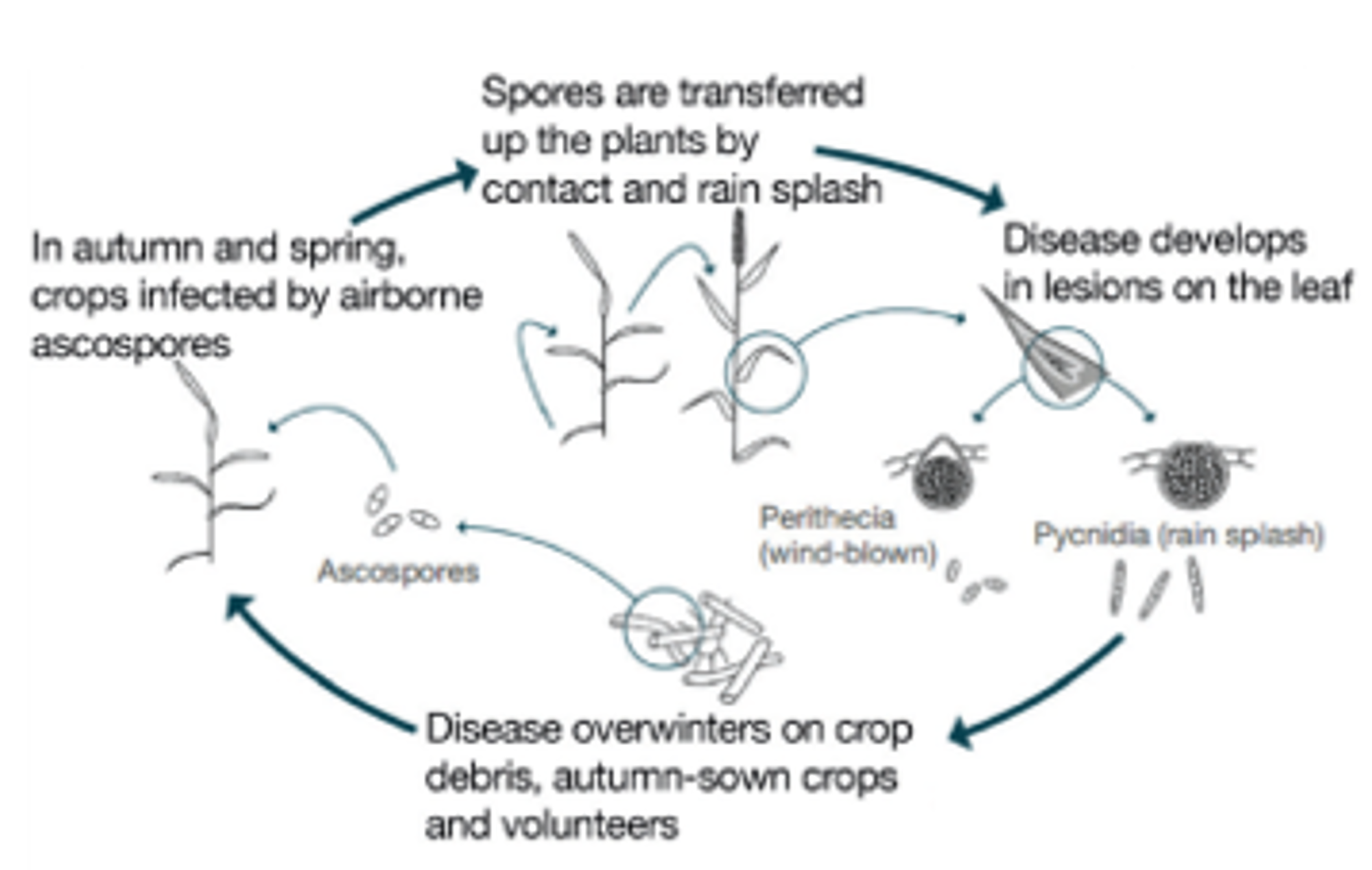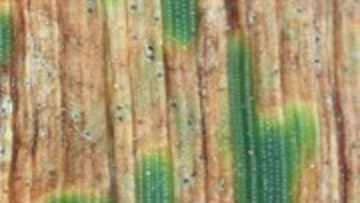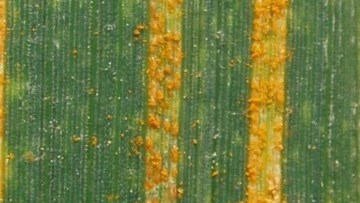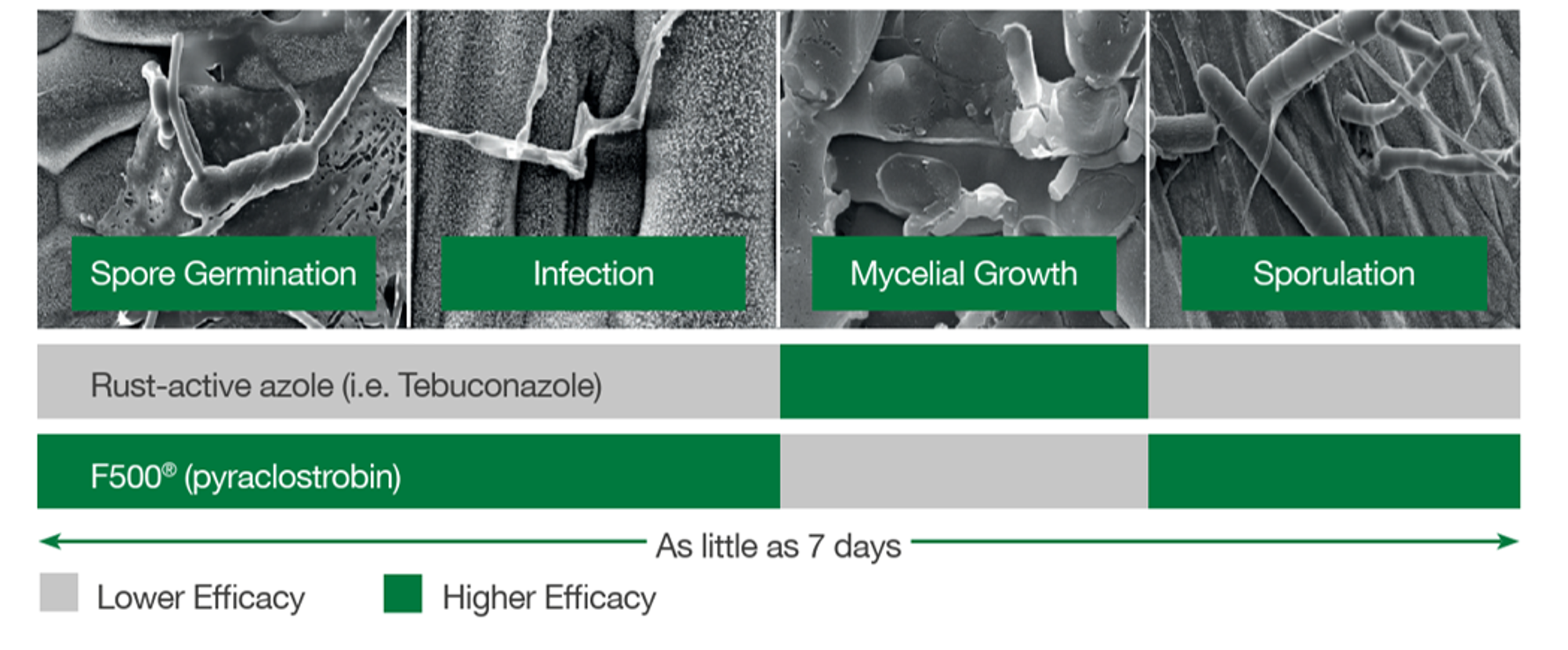Wheat
Crop yields are dependent on three factors; available natural resources, their capture and their conversion to harvestable grain. The available natural resources are light and water. With the heavy rainfall in Ireland, water is rarely a limiting factor, but light can be. Therefore, the capture of light must be maximised and this means looking after the photosynthetic area of the crop. Keeping the leaves as clean and green as possible, for as long as possible.
In particular, the flag leaf and leaf one account for over 40% and 20% of total yield respectively. For this reason, the T1 & T2 fungicide sprays that are targeting these leaves are particularly important to maintaining a clean and healthy crop.
In Ireland, the key diseases for winter wheat are Septoria tritici, yellow rust and eyespot.
Septoria tritici
When it comes to disease control in winter wheat, septoria is the most important disease in terms of yield impact. With a long latent period and known resistance to certain fungicide groups, it can be a difficult disease to control.
Once established in the crop, disease is easily identified as light brown lesions containing black pycnidia. These pycnidia are transferred via rainsplash, therefore in warm, wet weather disease is easily spread.


Yellow Rust

A key T0 target
Whilst Septoria has to remain the key target for wheat disease control, yellow rust has become more of an issue in the last number of years. Early intervention at T0 sets the foundation for reliable yellow rust control.
The disease
- Characteristic yellow pustules often undetected in the autumn
- Often starts in foci, very easy to miss unless every square metre is walked!
- Effective control requires an understanding of the disease and fungicide mode of action
- Overwinters on the crop or volunteers

Eyespot
Eyespot is very often underestimated in importance because few growers look at the stem bases of crops at the milky ripe stage or later - when severe eyespot can often be seen. Moderate or severe eyespot infections can cause yield loss in the order of 10-30%, even in the absence of lodging. Where eyespot is severe, lodging can occur, causing harvesting losses.

Revystar® XE
With its high loading of Revysol®, Revystar® XL sets a new standard for curative and persistent Septoria activity in wheat, including outstanding performance on shifted strains of Septoria.
